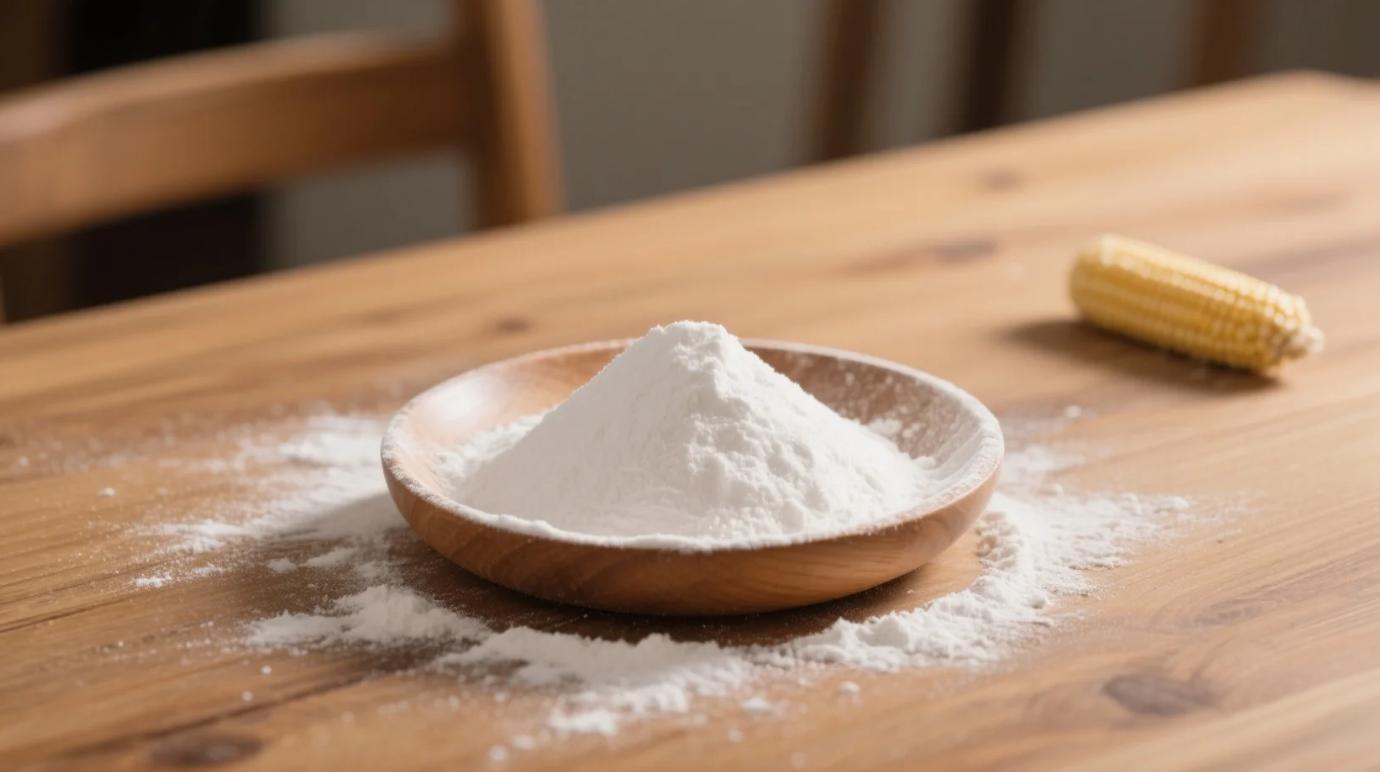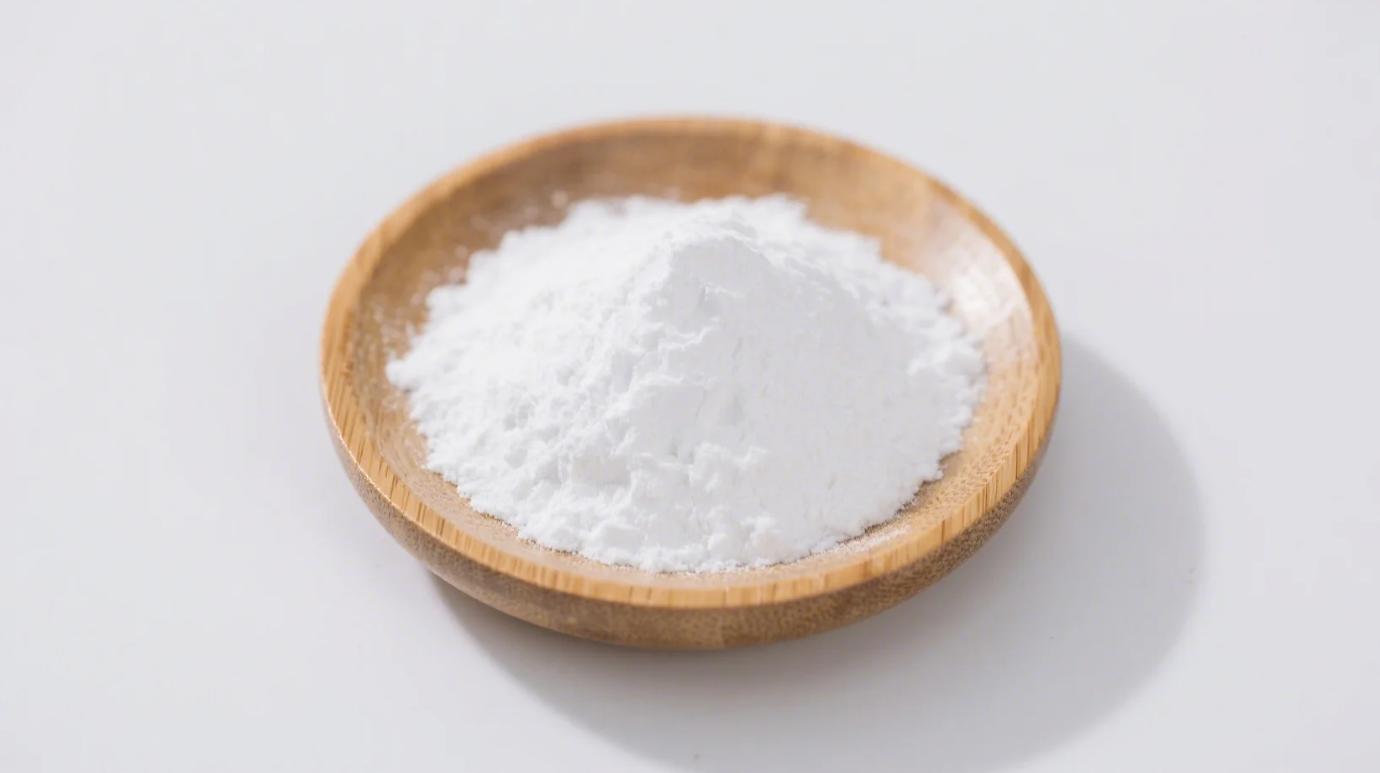Cornstarch 101: What’s in That Powder?
Derived from the endosperm of corn kernels, cornstarch is a pure carbohydrate—a fine, gluten-free powder used for thickening sauces, baking, and even DIY skincare. But not all cornstarch is created equal. Let’s dissect how organic cornstarch stacks up against conventional options and whether it deserves a spot in your pantry.

The Nutritional Breakdown: Good, Bad, or Neutral?
- Calories: 30 per tbsp (similar to sugar).
- Macros: 7g carbs, 0g protein/fat/fiber.
- Glycemic Index (GI): 95 (higher than table sugar!).
At first glance, cornstarch seems like a blood sugar bomb. But context matters:
- Resistant Starch Potential: When cooled after cooking (e.g., in pudding), it forms resistant starch, which feeds gut bacteria and may lower GI.
- Zero Antinutrients: Unlike grains, cornstarch lacks phytates or lectins that block mineral absorption.
Key Takeaway: Cornstarch isn’t “nutritious” but can be functional in moderation.
The Organic Difference: Why Sourcing Matters
Conventional cornstarch often comes with hidden risks:
- GMO Corn: 92% of U.S. corn is genetically modified, linked to herbicide overuse (glyphosate residues found in 60% of samples).
- Pesticide Residues: Non-organic corn may contain neurotoxic organophosphates.
- Processing Chemicals: Harsh solvents like hexane are used in refining.
Organic cornstarch solves these issues:
✅ Non-GMO: Sourced from heirloom corn varieties.
✅ Pesticide-Free: USDA Organic certification bans synthetic chemicals.
✅ Clean Processing: Enzymatic hydrolysis replaces toxic solvents.
Health Debates: Who Should Use (or Avoid) Cornstarch?
When It’s Beneficial:
- Gluten-Free Baking: A safe thickener for celiacs (unlike wheat flour).
- Hypoglycemia Rescue: Quick glucose source for diabetics in emergencies.
- Eczema Care: Mixed with water, organic cornstarch soothes irritated skin (no talc risks).
When to Think Twice:
- Insulin Resistance: High GI may spike blood sugar in prediabetes.
- Low-Carb Diets: Keto or carnivore followers should avoid.
- Digestive Sensitivity: Large amounts may bloat due to rapid fermentation.
Pro Tip: Pair with fiber (chia seeds) or ACV to slow glucose absorption.
Organic Cornstarch vs. Alternatives
| Thickener | Glycemic Index | Gluten-Free | Gut-Friendly | Uses Beyond Cooking |
|---|---|---|---|---|
| Organic Cornstarch | 95 | ✅ | ❌ (unless cooled) | Skincare, crafts |
| Tapioca Starch | 70 | ✅ | ✅ | Bubble tea, chewy textures |
| Arrowroot Powder | 65 | ✅ | ✅ | Dairy-free sauces, clear gels |
| Xanthan Gum | 20 | ✅ | ❌ (may bloat) | Gluten-free breads |
Winner for Versatility: Organic cornstarch works in icy hot applications (unlike arrowroot).
Myth Busting: Cornstarch Edition
Myth: “Cornstarch causes weight gain.”
Truth: Excess calories from any source cause weight gain. Used sparingly, it’s neutral.
Myth: “All cornstarch is inflammatory.”
Truth: Organic cornstarch lacks glyphosate and GMOs linked to gut inflammation.
Myth: “Cornstarch is nutritionally useless.”
Truth: It’s a blank canvas—enrich it with calcium-fortified plant milk or turmeric!
How to Choose the Healthiest Cornstarch
- Look for USDA Organic: Avoids GMOs and 90% of pesticide residues.
- Check Processing: “Non-GMO Project Verified” and “hexane-free” labels.
- Opt for Sustainable Brands: Brands like Bob’s Red Mill use wind-powered mills.
- Storage: Keep in airtight jars to prevent moisture (prevents clumping).
Innovative Uses for Organic Cornstarch
- Natural Dry Shampoo: Absorbs oil without silicones.
- Homemade Electrolyte Drink: Mix with Himalayan salt and lemon.
- Eco-Friendly Glue: Non-toxic for kids’ crafts.
- Mattress Freshener: Combine with baking soda and lavender oil.
The Verdict: Healthy? It Depends
Organic cornstarch isn’t a superfood, but it’s a safe, versatile tool when used mindfully. For those avoiding GMOs, pesticides, and harsh chemicals, it’s a pantry upgrade over conventional options. Pair it with nutrient-dense foods, and it can harmonize with almost any diet—except strict low-carb regimes.
Cook smarter. Thicken wiser.
Recommended Product
Organic Cornstarch
Premium Gluten-Free Thickener & Stabilizer for Food, Pharma & Industrial Applications
